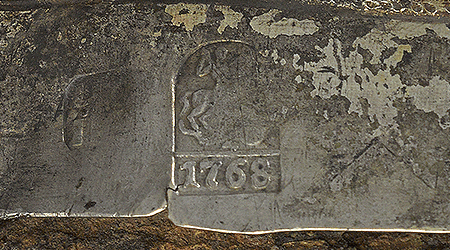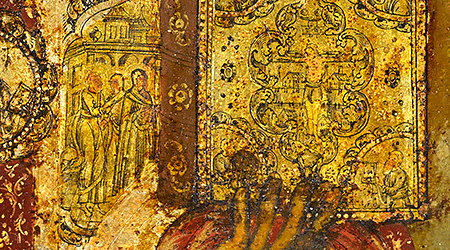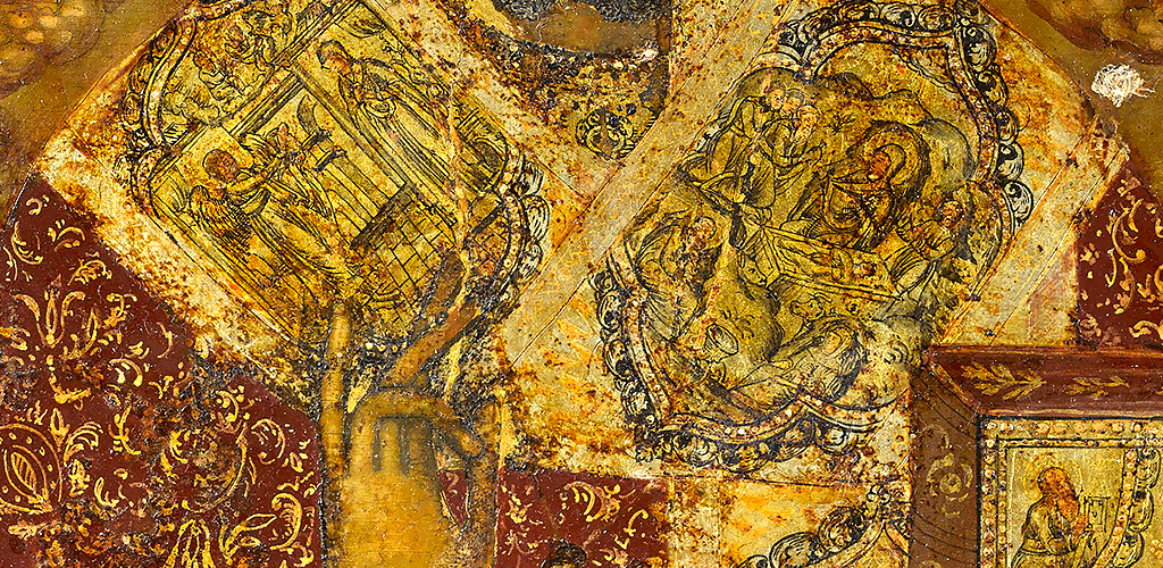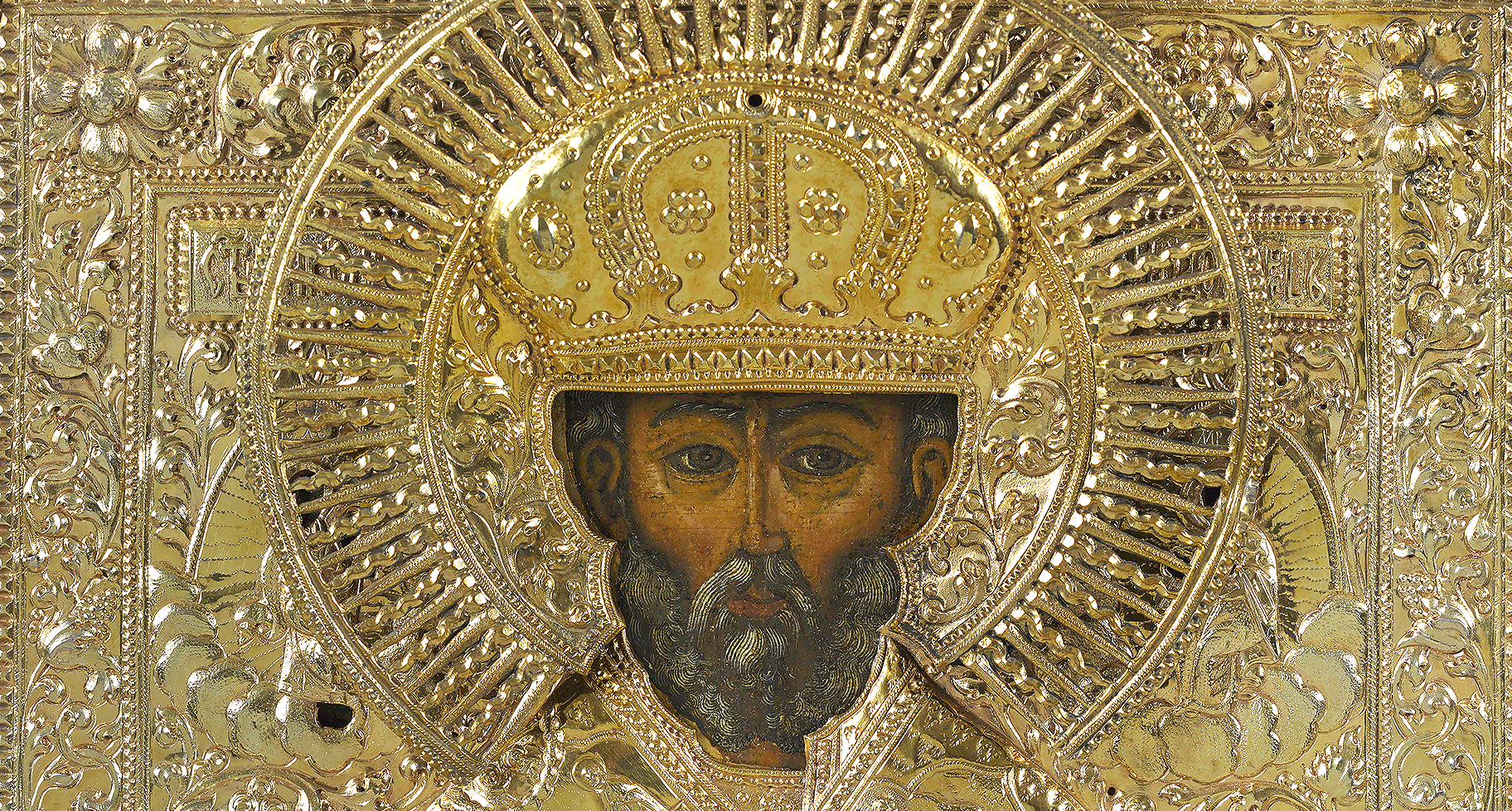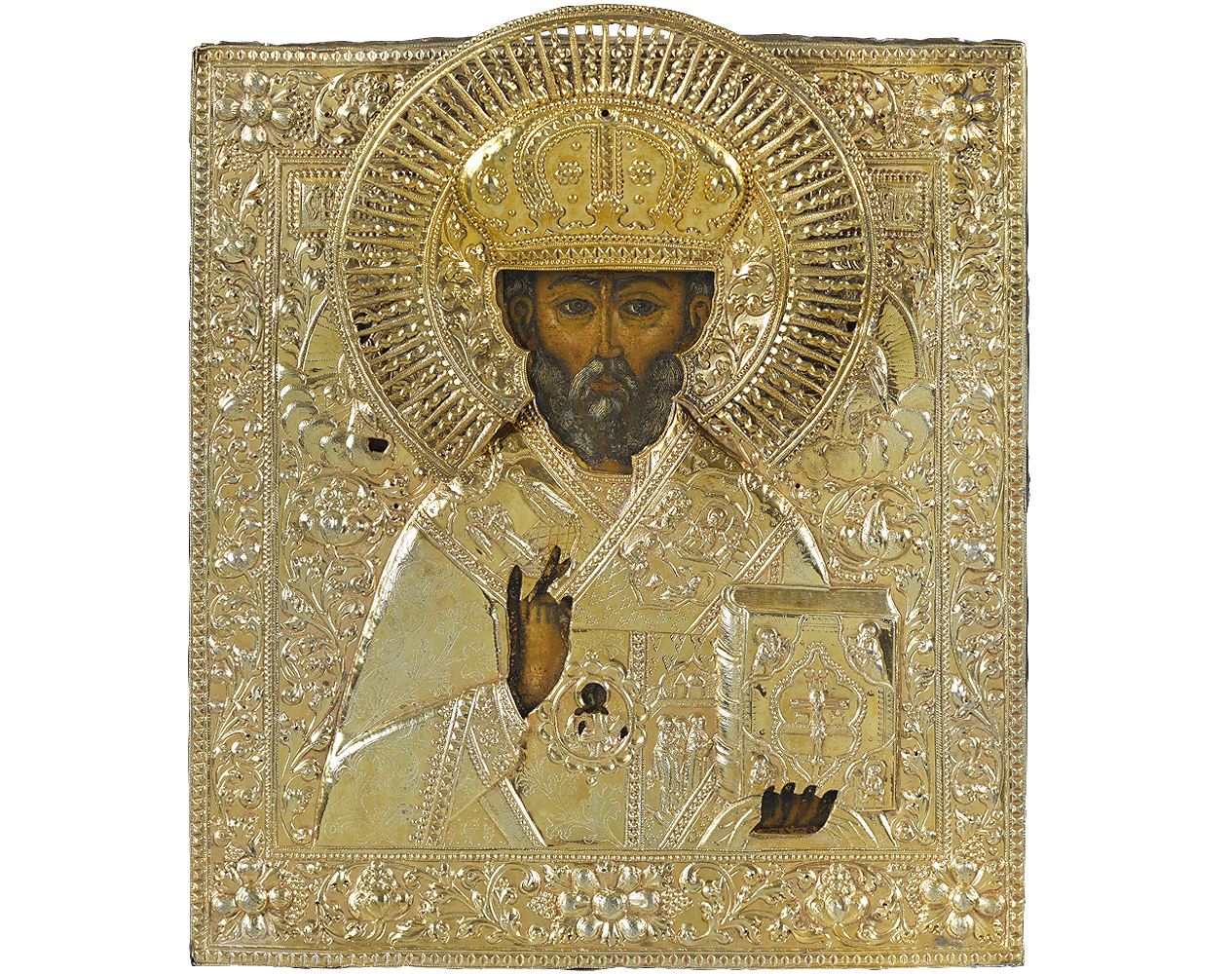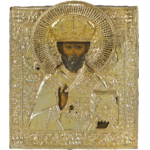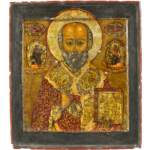Provenance
Christie’s Geneva, 19 May 1992, lot 231
Exhibitions
Icons and Easter Eggs Of Imperial Russia, St Mary’s College of California, Moraga, March 18 – April 30, 1995
Russian Art of the Nineteenth Century: Icons and Easter Eggs. A Postmodern Perspective, Patrick and Beatrice Haggerty Museum of Art, Marquette University, Milwaukee, 16 April – 28 July 1996
Bibliography
A. Ruzhnikov, A. Harlow, Icons and Easter Eggs Of Imperial Russia, St Mary’s College of California, Moraga, 1995, no. 11, illustrated in colour p. 8
C.L. Carter, Russian Art of the Nineteenth Century: Icons and Easter Eggs. A Postmodern Perspective, Milwaukee, 1996, no. 49, p. 56, illustrated in colour p. 22
An unusual icon encased in an opulent silver-gilt repoussé oklad with a large openwork halo and stylised foliate border. St Nicholas is shown in his bishop’s attire decorated with the scenes of the Annunciation, the Nativity of Christ, and the Presentation of Christ in the Temple. In his left hand, St Nicholas holds a closed book of Gospels with the Crucifixion and four evangelists on the cover, his right hand is raised in blessing. In the upper part of the composition, Christ and the Virgin are shown on his sides within rocaille cartouches.
St Nicholas was bishop of Myra on the southern coast of Asia Minor in the 4th century. The veneration of St Nicholas is very widespread despite the fact that he left no theological work or any other writings. According to his Life, when St Nicholas became a bishop he said: this dignity and this office demand different usages, in order that one should live no longer for oneself but for others. This life for others is his characteristic feature and is manifested by a variety of forms of solicitude for men – his care for their preservation, their protection from elements, from human injustice, from heresies, etc.
Worship of St Nicholas had reached Russia from Byzantium even before official Christianisation and by the eleventh century gained an exceptional place in the Russian tradition. The high degree to which the saint’s veneration was held in Russia is testified by the many iconographic types of St Nicholas in medieval Russian painting. Some of these depictions which had come from Byzantium and were modified on Russian soil did not have special names (e.g., icons showing the saint half or full length and those surrounded with scenes from his life). Other variations were replicas of specific miracle-working icons venerated in Russian.
St Nicholas remains highly venerated in Russia as a champion of the poor, vulnerable and disadvantaged. The feast days of St Nicholas are December 6th, May 9th and July 29th.
